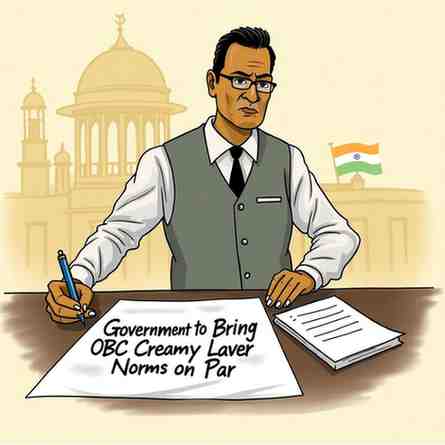
The central government is making efforts to ensure that the creamy layercritieria for reservation in jobs and education for Other Backward Classes (OBCs) is implemented uniformly. The move is aimed at removing anomalies in the application of the measure across central and state government jobs, PSUs and universities and is being referred to as a parity for reserved category candidates.
The Goal: Fairness and Clarity
The aim of this feature is to bring similarity among the working categories and pay slabs in other organisations. Therefore, people at the same level of qualification would be treated similarly for purposes of OBC reservation entitlements.
Origin of the Creamy Layer
The ‘creamy layer’ concept – that seeks to exclude the rich among the OBCs from the benefits of reservation – was introduced by the Supreme Court in the Indra Sawhney judgement in 1992. The DoPT had rolled out guidelines in 1993, which provided for an income ceiling of ?1 lakh annually at the first go (?8 lakh in 2017) and exemptions for children of senior officials such as professionals and rich people.
Addressing Past Inconsistencies
Though clearifications were issued in 2004 to end ambiguities for such private jobs, they were not implemented in spirit. The DoPT, since 2015, has strictly enforced these rules and many candidates were deprived benefits despite having OBC certificates issued under earlier, more liberal, interpretations of the rules.
The New Focus: Job Equivalence
- The current work attempts to draw clear correspondences between posts in a range of organisations and standard central government grades. For instance:
- An assistant professor in a college may be considered similar to a Group B officer in the government.
- Similar equivalence shall be determined for autonomous bodies, state PSUs, and aided institutions.
"It also sought to remove anomalies of two persons having similar pay, one in government sector and the other in private sector but they were placed one in the creamy layer and other in the non-creamy layer," the Centre said.
Who Stands to Benefit?
The recommended standardization is likely to be beneficial to the children of the lower level of government employees who fall in the income levels of more than ?8 lakh and not able to get a rank of high-ranking govt officers. It is, besides, going to bring parity for the employees in state organizations and aided institutions. The evaluation for the private sector employees, however, will still be mainly income driven because of the intricate and varying private job set-ups.
Seen as a major step in striking a balance between the goals of social justice and fairness and transparency, in India’s reservation policy, this development.
Month: Current Affairs - August 21, 2025
Category: current affairs daily